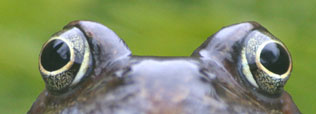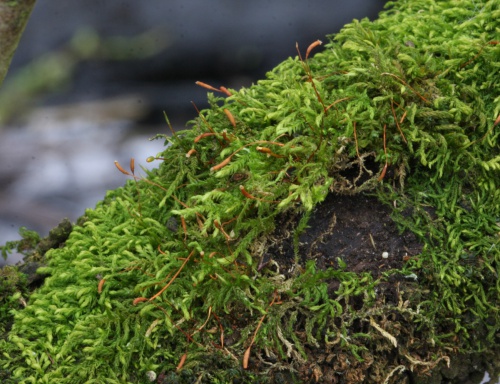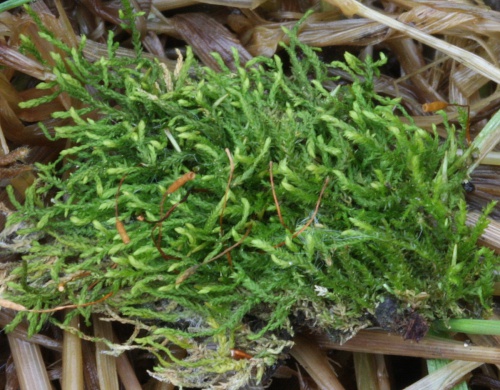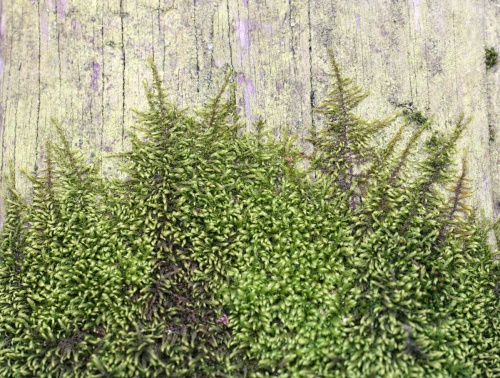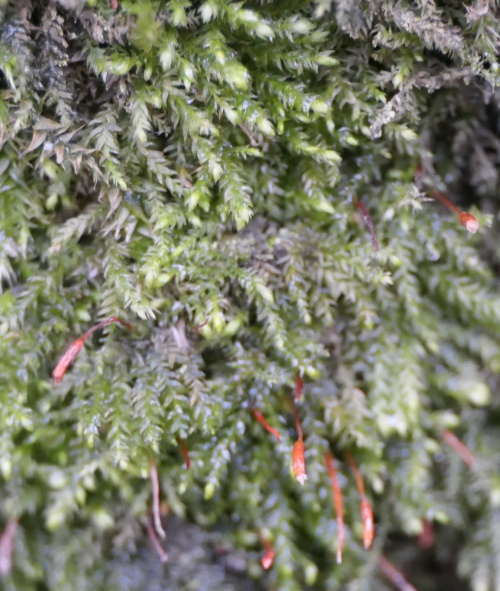Many-fruited Leskea - Leskea polycarpa
This slender moss forms dull, dark yellow-green, irregularly branched patches and tufts, in which short, curved or nearly upright branches up to about 4 mm long (although mats can be 2 to 3 cm across) arise from prostrate primary stems. Plants are often covered with silt. The crowded leaves are about twice as long as wide (about 1 mm or less long, 0.5 mm wide), held pointing away from the stem, and change little when dry. The nerve is well-developed in the lower half of the leaf, but disappears in mid-leaf. Cylindrical capsules are usually abundant in summer. They are about 3 mm long 4 times longer than wide and held erect or slightly inclined to the vertical. Setae are about 1 cm long, and arise from the primary stems, not from the branches.
L. polycarpa characteristically grows on the branches, trunks and exposed roots of trees in the flood zones of lowland rivers, streams, and ditches, and beside standing water, particularly where mud from flooding water coats the trees. It may also grow on stones, woodwork and brickwork. Occasionally it may be found away from water courses, for example on willows in moderately humid places or in the tops of hedges.
All year round.
Widespread and fairly frequent in Britain.
Fairly frequent in Leicestershire and Rutland.
Leicestershire & Rutland Map
Enter a town or village to see local records
MAP KEY:
Yellow squares = NBN records (all known data)
Coloured circles = NatureSpot records: 2020+ | 2015-2019 | pre-2015
UK Map
Species profile
- Common names
- Many-fruited Leskea
- Species group:
- Mosses & Liverworts
- Kingdom:
- Plantae
- Order:
- Hypnales
- Family:
- Leskeaceae
- Records on NatureSpot:
- 3
- First record:
- 27/06/2015 (Hamzaoui, Uta)
- Last record:
- 27/01/2018 (Nicholls, David)
Total records by month
% of records within its species group
10km squares with records
The latest images and records displayed below include those awaiting verification checks so we cannot guarantee that every identification is correct. Once accepted, the record displays a green tick.
In the Latest Records section, click on the header to sort A-Z, and again to sort Z-A. Use the header boxes to filter the list.
